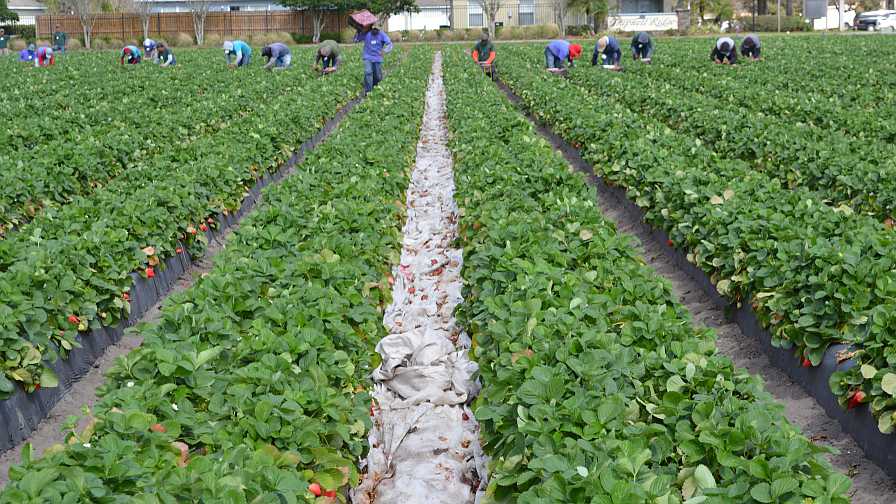Sizing up E-Verify Snag a Tall Order for Agriculture

Photo by Frank Giles
This summer, lawmakers made another attempt to pass legislation aimed at bringing some certainty to a very uncertain agriculture labor situation. But, as of this posting, that goal seems elusive, dividing some agricultural groups to favor or oppose the Ag and Legal Workforce Act (H.R. 6417). The legislation would replace the current H-2A visa with an H-2C visa, which is less costly and has reduced regulatory red tape.
The original bill (H.R. 4092: AG Act) failed to achieve a U.S. House vote in July, and the revised HR 6417 might not see a vote until after the November election. With no companion legislation in the U.S. Senate, action on the bill could likely push into next year, if it moves at all.
The American Farm Bureau Federation (AFBF) is supporting the legislation. AFBF President Zippy Duval noted: “If the AG and Legal Workforce Act doesn’t pass the House this fall, our chances for immigration reform will be lost, possibly for years. That’s the reality we’re facing on the issue, and it’s not an acceptable outcome for U.S. agriculture.”
Specialty crop groups have come down as a “no” on the AG and Legal Workforce Act. The E-Verify mandate in the bill is the biggest poison pill. And, the legislation would require undocumented immigrant farmworkers in the U.S. to leave the country and come back with the H-2C visa.
I reached out to the Florida Fruit and Vegetable Association (FFVA) for its reaction to the revised H.R. 6417. Mike Carlton, FFVA’s Director of Labor Relations, says they appreciate any effort to improve our critical guestworker program, but he says there are too many concerns (in its current form) surrounding this legislation to support it.
Carlton said, “We are concerned there is not a clear pathway to legalization for our current workforce and that the bill requires them to leave the country and then become part of a temporary workforce. Many of those workers have been here for years, putting food on America’s tables, and it’s unlikely that they would expose their families to scrutiny just to hopefully participate in a new guestworker program. As with many legislative programs, the determining factor on how they will work in practice becomes the regulations that are written to implement the legislation. We don’t know if those eventual regulations will allow the program to work effectively and address the unique workforce challenges agriculture faces.”
Carlton also expressed concerns regarding a cap on the number of visas allowed. This cap, he says, could limit domestic production of fruit and vegetables, opening the door to more foreign imports. We often think of foreign competition in terms of unfair trade practices, but our immigration policy influences this as well.
A study by the New American Economy estimates that labor shortages alone explain 27% of market share decline experienced by U.S. growers from 1998 to 2000 and 2010 to 2012. Labor shortages have gotten worse since 2012, so that percentage might actually be higher.
My hunch is the AG and Legal Workforce Act might not see the light of day given the hurdles in front of it. But, at least there was an effort made. Lawmakers just need to come up with a workable solution for those undocumented immigrants who have been working here for years. This is not an easy feat in today’s political climate, but one we must make to ensure a strong domestic specialty crop industry.










